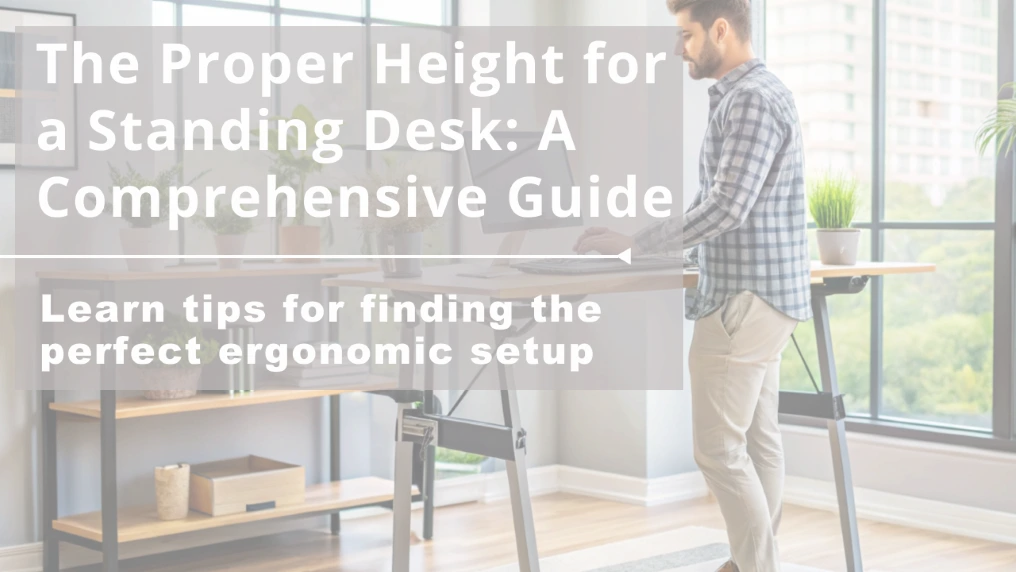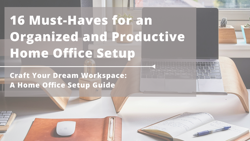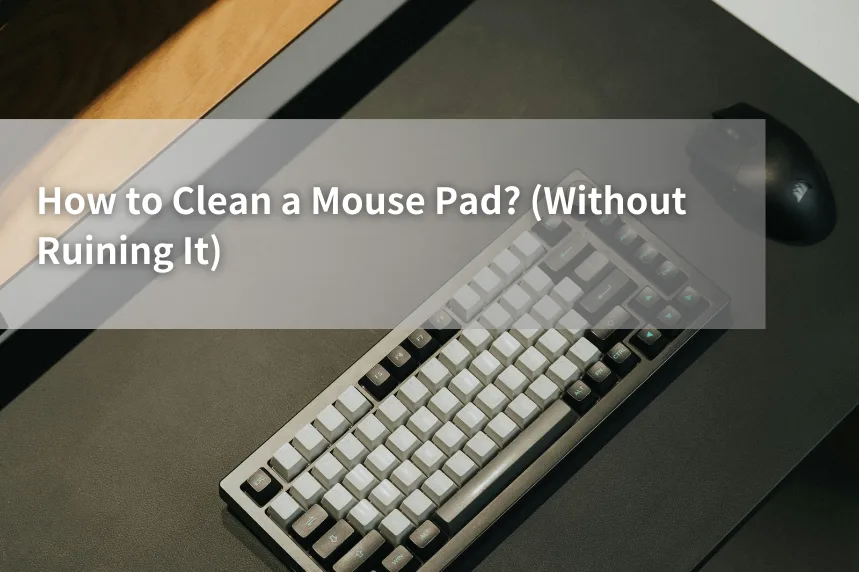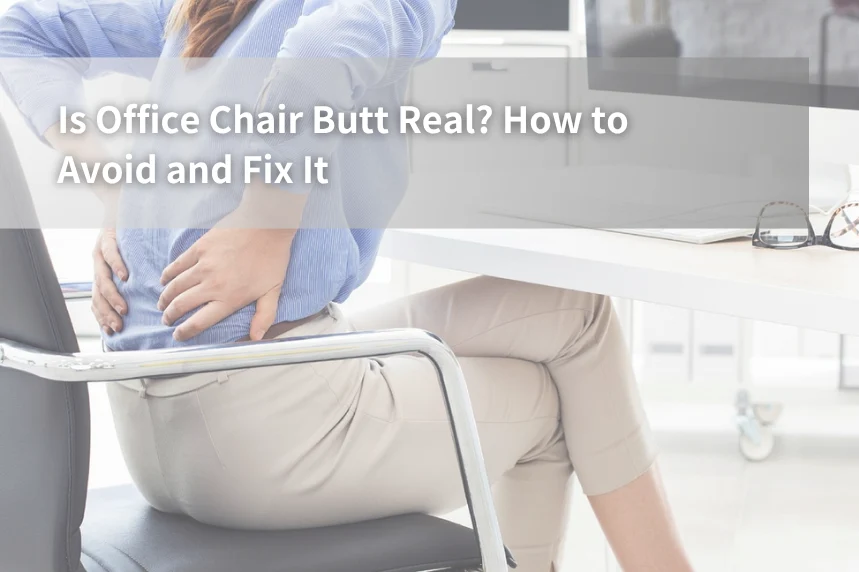The Proper Height for a Standing Desk: A Comprehensive Guide
10/31/2024Discover the proper height for a standing desk to improve posture, comfort, and productivity. Learn the best tips for finding the perfect ergonomic setup.

Table of Contents
Setting your standing desk at the correct height is crucial for maintaining ergonomic posture, reducing strain, and improving overall comfort while working. An improperly adjusted desk can lead to discomfort in your neck, shoulders, back, and wrists, hindering productivity.
In this guide, we will explore the ideal standing desk height, walk through key steps for determining the right height for your setup, and provide tips for maximum comfort and efficiency.
1. What is the Ideal Standing Desk Height?
The ideal standing desk height depends on the user's height for maintaining proper posture and reducing strain on your body. The correct height should allow your elbows to form a 90-degree angle while typing, ensuring your shoulders, neck, and back remain relaxed throughout the day. Also, your monitor should be at or slightly below eye level to avoid slouching or neck strain. For optimal comfort, it’s important to adjust your desk height based on your standing height and sitting preferences, as well as take breaks to change positions and promote circulation.
Recommended Standing Desk Height Based on User’s Height:
User Height (in feet and inches) | Desk Height in Standing Position (in inches) | Desk Height in Seated Position (in inches) |
5'0" | 36″ – 38″ | 22″ – 24″ |
5'1" | 36″ – 38″ | 22″ – 24″ |
5'2" | 37″ – 39″ | 22″ – 24″ |
5'3" | 37″ – 39″ | 23″ – 25″ |
5'4" | 38″ – 40″ | 23″ – 25″ |
5'5" | 39″ – 41″ | 24″ – 26″ |
5'6" | 40″ – 42″ | 24″ – 26″ |
5'7" | 40″ – 42″ | 24″ – 26″ |
5'8" | 41″ – 43″ | 25″ – 27″ |
5'9" | 42″ – 44″ | 25″ – 27″ |
5'10" | 42″ – 44″ | 26″ – 28″ |
5'11" | 43″ – 45″ | 26″ – 28″ |
6'0" | 43″ – 45″ | 26″ – 28″ |
6'1" | 44″ – 46″ | 27″ – 29″ |
6'2" | 45″ – 47″ | 27″ – 29″ |
6'3" | 45″ – 47″ | 28″ – 30″ |
6'4" | 46″ – 48″ | 28″ – 30″ |
6'5" | 47″ – 49″ | 29″ – 31″ |
Source: inchcalculator
Adjusting your standing desk according to these measurements can help create an ergonomic setup that promotes comfort, posture, and productivity.
2. How to Find the Perfect Standing Desk Height

Image from Freepik
Aside from using the height chart provided earlier, a desk height calculator can help with even greater precision to find the ideal standing desk height. Alongside these tools, here is a comprehensive guide to help you set up your desk for both sitting and standing positions:
Begin by standing with proper posture—shoulders relaxed, arms at your sides, and elbows bent at a 90-degree angle. Measure the distance from the floor to your elbow. This measurement serves as the baseline desk height, ensuring your arms stay neutral and reducing strain on your neck and shoulders while typing.
Once you have your elbow height, raise the desk 1 to 2 inches to allow your wrists to rest comfortably. This slight elevation helps keep your wrists in a neutral position, minimizing discomfort during long periods of typing. Ensure that your keyboard and mouse are placed together at this level for easy access and reduced wrist strain.
After setting the desk height, check that your wrists remain neutral when typing, and position your monitor so the top third of the screen aligns with your eye level. Keep the screen about 18 to 24 inches away from your face to avoid eye strain.
You must find the ideal sitting height if your desk switches between sitting and standing. When seated, your feet should be flat on the floor, knees at a 90-degree angle, and your arms resting at your sides with elbows bent at the same 90-degree angle.
Remember to consider your shoes when measuring, as the footwear you typically wear can influence your overall height and posture. By following these guidelines and using a desk height calculator, you’ll create an ergonomic setup that supports both comfort and productivity in sitting and standing positions.
3. What to Avoid When Setting the Height for Standing Desks

Image from Freepik
Setting the right height for your standing desk is crucial for both comfort and productivity. However, several common mistakes can undermine the effectiveness of your setup. Avoid these pitfalls to ensure you create an ergonomic workspace that supports your well-being:
1. Relying Solely on Height Charts: Using only the standing desk height chart without factoring in personal body proportions and the type of shoes you wear can lead to incorrect desk height settings.
2. Ignoring Seated Posture: Focusing only on standing height without considering your seated posture can result in discomfort, as the desk needs to accommodate both sitting and standing positions.
3. Neglecting Accessories: Remembering accessories like keyboard trays and anti-fatigue mats, which can add height to your workspace, may lead to inaccurate desk height measurements.
4. Setting the Desk Too High: Setting the desk too high can force an unhealthy posture, causing strain on your body. Always follow recommended height guidelines to avoid discomfort.
To ensure a comfortable and ergonomic setup, measure carefully, adjust according to your needs, and test different configurations.
4. Bonus Tips for Comfort and Efficiency

Image from Freepik
Maximizing the benefits of a standing desk involves more than just setting the correct height. To ensure a comfortable and productive work environment, consider incorporating these additional tips:
Use an Anti-Fatigue Mat: Standing for prolonged periods can cause fatigue and discomfort in your legs and feet. An anti-fatigue mat provides cushioning and support, helping to reduce strain and make standing more comfortable.
Gradual Transition: Start by standing for short periods, such as 15 to 30 minutes, and gradually increase the duration as your body adapts. Avoid staying in one position for too long; alternate between sitting and standing, and incorporate short walks into your routine.
Proper Desk Height and Setup: Adjust your desk height so that your arms rest naturally at your sides, with your hands at or just below elbow level. To achieve this, DEZCTOP’s Elite and Pro standing desks offer excellent options. The Elite model provides a wider range of height adjustments, ideal for shorter users, while the Pro is a more affordable choice for those who are comfortable with a standard height range. Keep your keyboard and mouse positioned close together and at the same level to maintain proper wrist alignment.
Monitor Positioning: Position your monitor at eye level with a slight tilt of 10 to 20 degrees and keep it at a forearm's length distance. For an effortless way to achieve this, you can consider using DEZCTOP’s D-Board Monitor Mount, which supports up to 32-inch monitors, offering tilt, swivel, and pivot adjustments for optimal comfort.
Effective Lighting: Use multiple light sources to minimize glare and reduce eye strain. Avoid direct light on your screen and adjust your workspace lighting to ensure a comfortable viewing experience.
Implementing these tips will help you create a more ergonomic workspace that promotes comfort and efficiency throughout your workday.
5. Prioritize Your Health with the Right Standing Desk Height
Setting your standing desk at the correct height is essential for long-term health and productivity. By ensuring proper ergonomic alignment, you can reduce strain on your neck, back, and shoulders while improving your overall posture. The key to finding the perfect setup is experimentation—adjust your desk height and monitor placement until you achieve a comfortable, pain-free working environment.
At DEZCTOP, we offer two main standing desk models to suit different preferences. The Bifrost Elite standing desk is perfect for users who need maximum flexibility.
It features multi-setting, electric height-adjustable legs and an anti-pinch function, making it especially suited for shorter individuals or those seeking a customizable layout with compatible accessories.
Compared to the Elite, the Pro standing desk is a more budget-friendly option. Additionally, the Elite’s extended height adjustment range accommodates the addition of wheels to the desk legs, as the wheels will raise the desk's minimum height, enabling swift mobility.
Here’s a comparison table of our Elite and Pro desks to give you a clearer understanding of the differences between our models.
Products | Bifrost Pro 120 | Bifrost Pro 160 | Bifrost Elite 120 | Bifrost Elite 160 |
Tabletop |
|
|
|
|
Height | 27.6~47.2 in. (70~120 cm) | 25.6~51.2 in. (65~130 cm) | ||
Legs | Two-stage lifting equipped with dual motor | Three-stage lifting equipped with dual motor | ||
Space between Legs | 29.1 in. (74 cm) | 43.3 in. (110 cm) | 29.1 in. (74 cm) | 43.3 in. (110 cm) |
Color | Black / White / Walnut / Oak | |||
Cable Management | 46.1 x 3.5 x 5.1 in | 62 x 3.5 x 5.1 in | 46.1 x 3.5 x 5.1 in | 62 x 3.5 x 5.1 in |
Max. Load | 264.6 lbs (120 kg) evenly distributed | 264.6 lbs (120 kg) evenly distributed | ||
Both the Elite and Pro desks feature smooth dual-motor systems for effortless adjustments, helping you maintain the ideal desk height.
What’s more, pair your desk with DEZCTOP’s D-Board Monitor Mount, designed to support monitors up to 32 inches.
With its full tilt, swivel, and pivot capabilities, it ensures optimal monitor placement for maximum comfort and productivity.
Explore how these innovative solutions can transform your workspace into a healthier, more efficient environment tailored to your needs.
Related Articles Which May Interest You:
Tag
Dezctop









